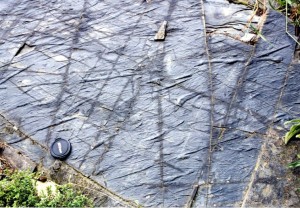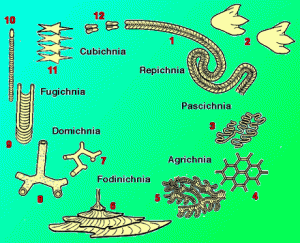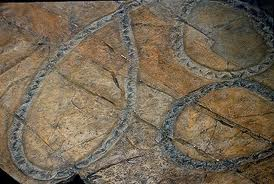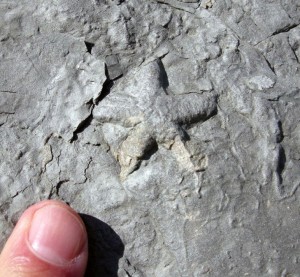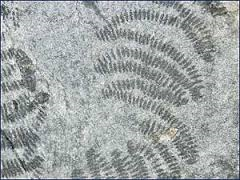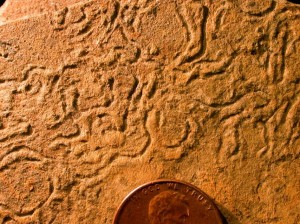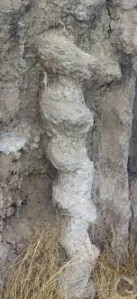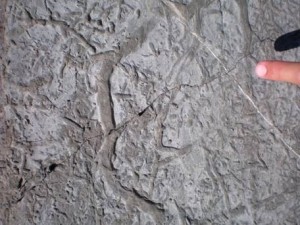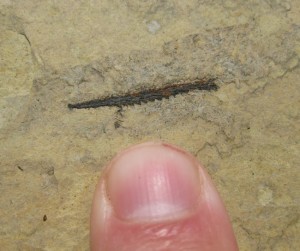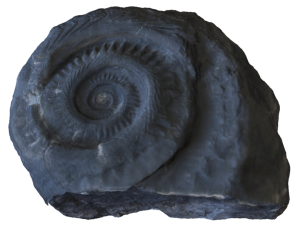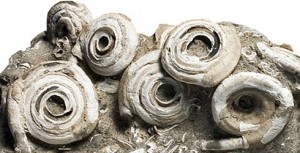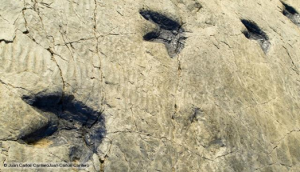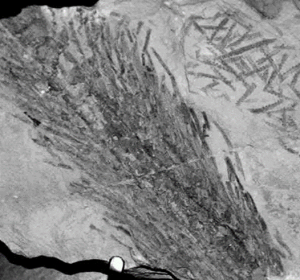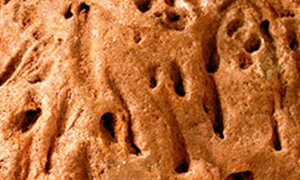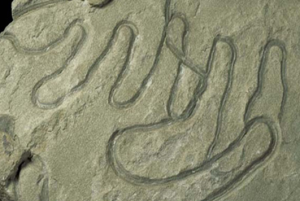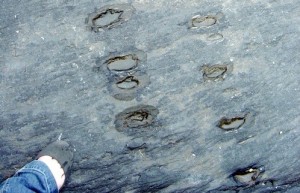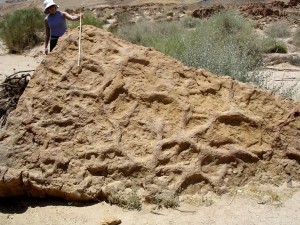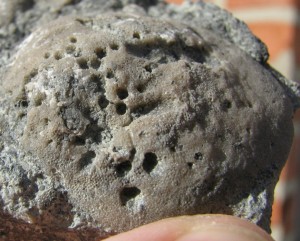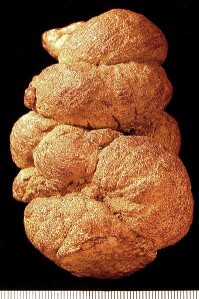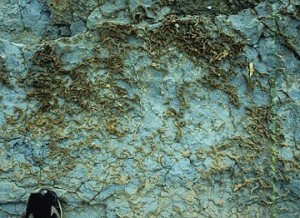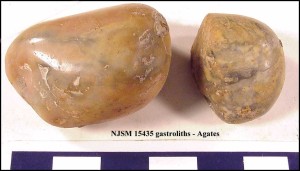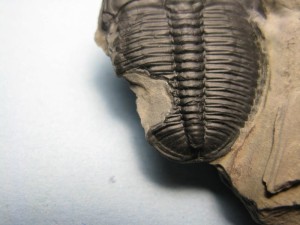Trace Fossils
Anatomy of Trace Fossils
Trace fossils are a vital part of history and evolution. These fossils are tracks, traces or burrows left behind by an organism on or within a sedimentary structure. These prove much more important than actual body fossils as they remain present even when the body is decayed and eroded over thousands of years, they aided in finding and dating the first organisms to live on land.
These ichnofossils tell us a story about the animal that created it and gives us an insight into their everyday activity. Detailed study of the anatomy of these trace fossils can provide us with an idea of the animal’s size and morphology, as well as what they were doing while the fossil was created. The shape and distribution of these fossils can sometimes tell us the exact animal that made it. However, there is also great difficulty in differentiating between certain trace fossils as many look very similar, so it is not safe to make any assumptions of the producer. This results only in educated guesses and debates, as it is the only viable option to find the organism responsible.

This is an exceptional example of a trace fossil. The anatomy of these fossils and the distribution tells us a lot about the organism that created it. The distinctive shape and space between each step assures us it was a dinosaur that produced these fossils in what was once a very soft sediment surface. We can determine by the distance between traces and their depth that it was quite a large dinosaur (2-3m). The anatomy of these tracks provide us with much more information than just the animals size, it tells us vital parts of their life such as their speed and length of stride, whether they walked on two or four legs, bone structure of the foot and even the stalking behaviour of certain carnivores. Dinosaur footprints just like these have been found in over 1500 sites worldwide. The anatomy of each one teaches us new facts about these dinosaurs and their way of life.

This trace fossil of footprints is only one of four tetrapod fossils in the world and it is located just off the coast of Kerry on Valentia Island, the others being in Scotland and Australia. These trace fossils are the oldest proof of a four legged organism on land as they are dated back to the mid Devonian age, up to 370 million years go. It is important to study their anatomy in detail and there is a lot of information that can be gained by examining these track ways. The constant spacing, pattern and size of the tracks give us reason to believe that it was a salamander like reptile up to one metre in length. There are also slight undulating marks between the tracks that could possibly have been the belly or a tail dragging along the soupy sedimentary surface lamenting the hypothesis of it being caused by a reptile.

I have included the image above as trace fossils can be confused with sedimentary tool marks. You must study the marking very carefully as the anatomy of both can be very similar. What may appear to be trails of a small insect such as a millipede or beetle could easily be a scour mark or flute cast. These are marks or dents on the bedrock caused by glacial abrasion which are later filled with sediment giving it a similar appearance to some trace fossils, so it is vital to consider when observing trace fossils.
References
http://www.bbc.co.uk/nature/fossils/Trace_fossil
http://en.wikipedia.org/wiki/Sole_markings
http://www.devoniantimes.org/Order/trackways.html
http://www.midwalesgeology.org.uk/member-gallery.php
Biology of Trace Fossils
The topic that will be covered in this section is the various types of actions that lead to the different types of trace fossils. There are several different actions and each leave a different pattern, the cause of these trace fossils can be classified into the following groups.
• Movement/ Locomotion traces (Repichnia)
• Resting traces (Cubichnia)
• Feeding (Fodinichnia)
• Grazing traces (Pascichnia)
• Dwelling traces (Domichnia)
• Escape traces (Fugichnia)
Movement/ Locomotion– these traces were formed when an organism was simply moving through the sediment, as it does so it leaves behind marks that are sometimes preserved, common examples of these kind of traces include tracks and trails. These trace fossils follow the bedding plane and are usually preserved in semi-relief, they are usually straight or slightly curved.
Resting– these traces were formed when an organism that was at rest left an imprint in the sediment, these imprints mimic the morphology of the organism. Like the traces left by Movement these trace fossils follow the bedding planes and are preserved in semi-relief.
Feeding– These traces were left by an organism that was feeding, these traces can be broken down into three sub-categories depending on how the organism fed, one type is penetrative, this is preserved in full relief, another type is formed when the sediment had undergone systematic mining and lastly there are spreites which are the most complex feeding traces, these can be identified by evidence of back-filling.
Grazing-these trace fossils were formed by an organism as it was meandering through the sediment in search for food, the loops are usually regularly spaced and systematic. These trace fossils can be found along the bedding plane surface and are usually preserved in semi-relief.
Dwelling– these trace fossils were left by a creature making it’s home, these can include burrows or borings. They can be horizontal or vertical and are preserved in full-relief they are frequently cylindrical and sometime scratches can be seen along the tube. A great example of a dwelling trace fossil is the Devil’s Corkscrew. This is the fossil of a burrow made by beavers twenty two million years ago. There are several different types of this beaver species that make this kind of burrow and they can be differentiated by the diameter of the spiral and width of the dig marks.
Escape-these traces were left by an organism trying to flee some kind of threat, usually this threat is burial by a storm. Sometimes chevron patterns can be seen along the trace fossil from the upward movement of the organism. The type of preservation seen in the image below is known as convex hyporelief.

References:
http://www.es.ucl.ac.uk/tf/morph.htm
http://www.naturalhistorymag.com/htmlsite/master.html?http://www.naturalhistorymag.com/htmlsite/editors_pick/1994_04_pick.html
http://woostergeologists.scotblogs.wooster.edu/2012/01/29/woosters-fossils-of-the-week-bivalve-escape-trace-fossils-devonian-and-cretaceous/
http://paleo.cortland.edu/tutorial/Trace%20Fossils/tracefossils.htm
http://www.geol.umd.edu/~tholtz/G331/331ichno.htm
Localities of Trace Fossils
I chose to study trace fossil localities because the variety in location, and therefore variety of organism lifestyle and species interested me.
Trace fossils occur everywhere from beaches to coal mines, and deserts to seabeds. As there are trace fossils that are from the start of the geological timeline, the Precambrian era, they occur in areas that today are very different to what they were 570+ years ago. Due to the postion of land masses during the Precambrian era, most of the planet was covered in a large expanse of ocean. Therefore, most Precambrian trace fossils are of basic, aquatic organisms. The trace fossil localities for Precambrian organisms are areas where sedimentary rocks are exposed, places such as Australia. Recent findings found that large amoeboid protists left macroscopic traces at the bottom of the deep oceans(Pawlowski & Gooday,2009)). As time progresses the organism became more evolved, as did the trace fossils. The Palaeozoic era presented far more complex organisms, from Silurian trilobites to Carboniferous brachiopods. There are many trace fossils left of these creatures showing they’re mode of life, feeding habits and and form(Miller,2011). Like the Precambrian era, the localities for Palaeozoic trace fossils are areas that were once seabeds, although more shallow seas than Precambrian. Places such as New Zealand, California and Canada being a few of many areas that exibit excellently preserved and plentiful trace fossils. New Zealand’s Ordovician record is particularly well preserved,the succession of graptolites is one of the most complete in the
world(www.teara.govt.nz).
The Mesozoic Era presented a time when marine predators became larger and more numerous, this is known as the Mesozoic Marine Revolution(Vermeij,1977). Due to this, the amount of macroborings increased considerably. Swamps were common in the Mesozoic landscape and because of this coalfields are frequent trace fossil localities. Plant and animal fossils have been found preserved in coalfields. The picture on the left is of a Helicoprion tooth whorl found preserved in coalfield in Utah. In the Caenozoic era there was a huge diversification in animal and plant life, this has lead to there being a variety of trace fossils and trace fossil localities. The Rancho Le Brea Tar Pits in Los Angeles is an asphalt seep. It is a trace fossil locality which has excellent pleistocene fossils (www.ucmp.berkeley.edu) . Fossils here range from water beatles to mammoths. Another trace fossil locality is the Monterey Formation. This exposed Miocene outcrop in coastal California contains fossils of microalgae and shellfish.
REFERENCES
[1] Jan Pawlowski, Andrew J. Gooday, Current Biology, 19, 28-30, 2009
[2] http://www.earth.ox.au.uk
[3] Natural History Museum, British Fossils, Palaeozoic, 2012
[4] http://www.teara.govt.nz
[5] Vermeij, G.J., The Mesozoic marine revolution; evidence from snails, predators and grazers, Paleobiology, 3, 245-258
[6] [image 3] http://www.autodeskblogs.com
[7] http://www.ucmp.berkeley.edu, 2008
[8] Miller, W., trace Fossils: Concepts,Problems,Prospects, 2011
Taphonomy of Trace Fossils
Taphonomy, the study of fossilization, is an important element of palaeontology, as it, along with the fossilised evidence provides a window into past environmental states.
One of the most important goals of taphonomy is to learn about the conditions under which the fossil record is formed. Even though the process of fossilisation is time-dependant and involves periods measured in a geological timescale, many of the factors determining the conditions under which the traces arose can be traced back to present times, (Cruz, I., 2007). Trace fossils are the geological records of biological activity. The taphonomic state of these trace fossils (ichnofossil) assemblages can be measured and assessed using two independent parameters: the completeness of the preserved record of biogenic activity that occurred in a substrate, known as ichnologic fidelity, and the degree of manifestation of the trace fossils that are preserved, known as trace fossil visibility. These parameters are controlled by many environmental dynamics, tracemaker behaviour and location in the substrates. Also influential are a range of diagenetic processes, including mechanical compaction, selective mineralization, lithification, and weathering. Consequently, trace fossil preservation modes can be exploited in the studies of depositional regimes, paleobiology, and post-depositional sequences. Trace fossil assemblages characterized by relatively high ichnologic fidelity, trace fossil visibility, or both these combined, can be particularly informative, and hence, may be considered as ichnofossil-lagerstätten, or fossil reservoirs, (Savrda, C., E., (2007).
Figure 1. displays fossilised footprint tracks, these are often found in mud like sediment that have almost been ‘baked’ in position. Depth of the prints can provide us with info about the sediments composition and the animal that left the prints.
Trace fossils are best preserved in sandstones, the grain size and depositional facies both contributing to the enhanced preservation. They may also be found other sedimentary rocks like shales and limestones.
Figure 2. displays early Silurian aged plant leaf traces. The taphonomy of these specimen traces occurred through the outline impressions of the plant structure being carbonized and permineralized onto the rock surface.
Within sediment trace fossils are present as burrows and borings left by organisms or root marks, these forms of traces are endogenic. Animal burrow and cast preservation can often occur if the burrow is infilled with a different sediment thus conserving the unique burrow outline.
Figure 3. shows a rock with the boring hollows still intact with in the solid matrix often found in marine sandstones.
Trail traces can be found fossilised in when left on loose or semi-solid sediment at the time of formation, this is then covered over by layers of fresh sediment overtime and lithified into the rock strata.
Figure 4. displays these trails, which can hint a lot about organism feeding patterns and locomotion.
Other forms come in that of facal pellets and coprolites. These fossilised excrements have had their original composition replaced by mineral deposits such as silicates and calcium carbonates, (Dentzien-Dias et., al.,2012). Gastroliths, which are gizzard stones, have been found fossilised within intact body fossils. Prehistoric nests are also considered as trace fossils and been discovered preserved through forms of carbonisation and recrystallization.
References
• Cruz I., (2007). Avian taphonomy: observations at two Magellanic penguin (Spheniscus magellanicus) breeding colonies and their implications for the fossil record. Journal of Archaeological Science. Vol. 34, 8, 1252 – 1261.
• Dentzien-Dias P., C., de Figueiredo A., E., Q., Horn B.,, Cisneros J., C., Schultz C., L. (2012). Paleobiology of a unique vertebrate coprolites concentration from Rio do Rasto Formation (Middle/Upper Permian), Paraná Basin, Brazil. Journal of South American Earth Sciences. Vol. 40, 53-62.
• Savrda, C., E., (2007). Taphonomy of Trace Fossils. Journal of Trace Fossils. 92–109.
• Fig. 1. Courtesy of http://www.bbc.co.uk.
• Fig. 2. Courtesy of http://www.newark.osu.edu.
• Fig. 3. Courtesy of http://www.earth-pages.co.uk.
• Fig. 4. Courtesy of http://www.museevirtuel-virtualmuseum.ca.
Fossil Record of Trace Fossils
The fossil record of trace fossils have an important role in palaeontology, as the fossil record provides us with all the evidence of organisms actually having existed. The fossil record can show us the history of trace fossils throughout the Earth`s biotic lifespan.
The fossil record of trace fossils includes tracks, trails, burrows, borings, excrement, root traces, gastroliths and bite marks which were created by the organisms when they were alive.
On sediment trace fossil record
Tracks and trails have formed on sediment and over time the sediment has undergone diagenesis to preserve these tracks and trials within the sedimentary rocks.
Tracks are discrete prints which have usually formed from isolated body parts, such as the limbs. On Valentia Island there is a track way that is 372 million years old from a tetrapod and it provides some of the oldest evidence of one of the first water dwelling creatures which crawled out of the water and made the important evolutionary step towards land dwelling creatures.
Tetrapod tracks on Valentia Island
Trails are continuous traces which are usually formed by the whole body. Worm like creatures are a prime example in the fossil record of trails. Many trails can be seen in 2 thin upright slabs of Liscannor Flagstone in the western end of the Geological Garden outside the Butler Building in the North Mall Campus. These trials are 320 million years old and were formed during the Carboniferous Period by marine worm like creatures.
Within sediment trace fossil record
Bioturbation is the reworking of the morphology of soils and sediments by pants and animals. Burrows and borings are forms of bioturbation.
Burrows formed in soft sediment by locomotive organisms which displaced sediment grains aside.
Borings formed in hard substrates by organisms slicing through pre-existing structures or grains.
Excrement
Excrement also known as coprolites are fossilized faeces and are considered trace fossils as they provide evidence for an animal`s diet. Coprolites can range in size from a few mm to over 60 cm.
Root Traces
Root traces are the most common trace fossils in the fossil record left by plant activity. They show the branching and irregular morphology similar to living plant roots. The root traces found in The Bahamas are pristinely preserved.
Root trace fossils in Grotto Beach Formation, San Salvador Island, Bahamas
Gastroliths
Gastroliths are rocks which were once within an animal`s stomach. These rocks were used to grind food in animals lacking suitable grinding teeth. Gastroliths are rounded and polished due to being subjected to the digestive juices within a dinosaur’s stomach. They are different to the surrounding geology and found with the fossils of dinosaurs.
Bite Marks
Bite marks can be found on some ancient fossils and indicate in the fossil record what animals were hunted and what organisms were hunted. Bite marks can indicate to us ancient organism’s diets.
Trilobite with bite mark
References:
http://www.enchantedlearning.com/subjects/dinosaur/glossary/Coprolite.shtml
http://www.envs.emory.edu/faculty/MARTIN/ichnology/tf-plants.htm
http://www.factmonster.com/dk/science/dinosaurs/trace-fossils.html
